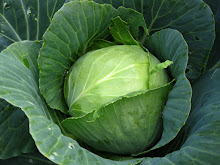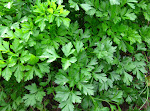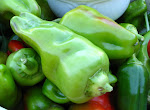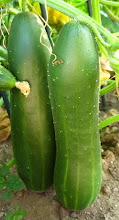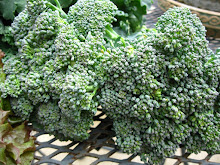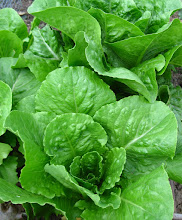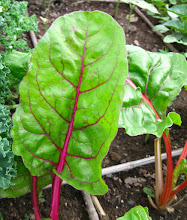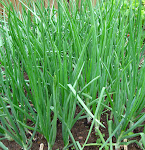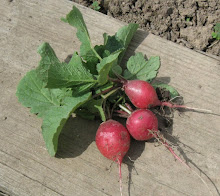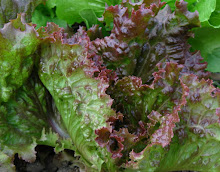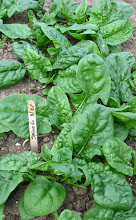Bone broth - it's all the rage these days! Why??
Well, with all the recent focus on gut health and autoimmune disorders, bone broth has come into the spotlight and is credited for healing and sealing gut permeability. It's also great for your skin, hair and nails. When bones are simmered all day, collagen and minerals are pulled from the bones, resulting in an amazing tonic.
I had been motivated to learn how to make bone broth because of my own autoimmune issues, but also because it just feels right; there's something satisfying about respecting every part of the animal and not tossing their precious bones. And, nothing on a grocery store shelf will compare!
First of all, what is bone broth? Is it the same as stock or broth? Nope!
Here's the scoop:
Broth is made by simmering meaty bones (or just meat!), plus onions, carrots and celery for under two hours. It is typically seasoned with salt, pepper, and other spices.
Stock is made with bones that have a small amount of meat scraps on them along with onions, carrots, and celery for two to six hours. It is left unseasoned, and it doesn't gel because it hasn't been simmered long enough.
Bone broth is defined by its thickness and long cooking time. No seasoning is added. I don't like to add any vegetables because I think it makes it bitter, even though many recommending doing so. Bones are simmered for anywhere from 12-72 hours, resulting in lots of collagen-rich gelatin in the broth. Collagen is a protein that is great for your skin, hair, and nails, and promotes a healthy gut. You'll know that you got it right if it cools into a jello-O consistency when you put it in the refrigerator!
How To:
First of all, there's no sense in going to all the work of making bone broth with just any old bones. I'm fortunate to have a farm near me that sells pastured chicken and beef bones. I purchase lamb and pork/ham bones from
Rooster Street Butcher in Lititz. Search out a good source of bones from animals that were pastured and not fed any GMO feed.
There's so much info about making bone broth on line, and it can be kind of confusing. I read everything I could find, studied a chapter on stock in the
Nourishing Traditions cookbook, and chatted with Tony at
Rooster Street Butcher. I experimented with a number of different methods, and finally came up with the following way of going about it:
But first, please consider adding one magic ingredient: chicken feet!!
I know, it's the creepiest thing, and you probably won't want to tell too many people that the yummy soup you made from your precious broth was made with chicken feet, but it will result in a luscious collagen-rich broth. Trust me, it's worth it, even though I always feel like a witch stirring her cauldron....
Roasted Chicken Bone Broth
Ever since I switched to eating pastured chicken, I found it's cheapest to purchase a whole bird vs. cut up pieces. Talk about an adjustment from years of cooking with boneless, skinless breasts! But, I am super happy with my
roast chicken, now. After roasting, I usually eat the wings, legs and thighs, and then chop or shred the breast meat and freeze it for later. I toss the carcass and bones in the freezer, and when I have accumulated enough bones, I make a batch of chicken bone broth.
Weigh chicken bones and place in a large stock pot.
Add one gallon of water per 2 lbs of bones.
Add 2 chicken feet per gallon of water.
Bring to a boil and skim off any scum.
Reduce heat, cover and simmer all day.
When finished cooking, remove the bones with tongs or a slotted spoon and strain broth through a sieve into a large bowl or another stock pot.
Ladle broth into wide mouth pint jars.
Chill overnight.
In the morning, skim fat off the top of each jar and freeze.
Chicken Bone Broth
Roasted chicken broth has a slightly stronger flavor than broth made from uncooked bones, so I usually like to have some of this milder flavored chicken bone broth on hand as well. Necks, backs, and wings are all great for broth, and will be your cheapest option; you can always use a whole chicken too, but that gets pricey. I also use leftover chicken carcasses from making soup. There's no need to add any seasonings at this point; you just want the true chicken flavor.
Follow the same instructions above for Roasted Chicken Broth.
Beef, Pork, or Lamb Stock
Stock made from these animal bones has kind of a funky flavor if you don't roast them first. Also, it's helpful to add vinegar and let them soak before simmering to help leach the minerals out of the bones, (For whatever reason, I usually skip the vinegar step when making chicken bone broth, but maybe I need to rethink that.) Ask for bones from your butcher - he'll know what you need. I usually don't use marrow bones, but some people do.
After weighing your bones, place them on a rimmed cookie sheet and roast for 30-60 minutes at 350 degrees.
Then, place bones in a large stockpot.
Add 1 gallon water per 2 lbs. of bones
Add 2 T. vinegar per gallon of water, and soak for 30 minutes.
Then add:
2 chicken feet, per gallon of water
1 t. peppercorns per gallon of water
1 bay leaf per gallon of water
Bring to a boil and skim off any scum that rises to the surface.
Reduce heat, cover and simmer all day.
When finished cooking, remove the bones with tongs or a slotted spoon and strain broth through a sieve into a large bowl or stock pot.
Ladle into wide mouth pint jars.
Chill overnight.
In the morning, skim fat off the top of each jar and freeze.
Additional notes:
Plan to get up early, get it going first thing in the morning, and let it simmer all day. It's a fun project for a day at home!
I usually try to make bone broth when the weather is cool. That way, it's cold enough for me to set the stockpot or the jars in the garage to chill overnight. I usually make a huge batch while I'm at it and don't have enough refrigerator space for a big stockpot or lots of jars.
If you ladle broth into jars, it will cool much more quickly than a large pot. If you are planning to use plastic containers, then you'll want to allow the pot of broth to cool before pouring into the containers. I have a phobia when it comes to storing food in plastic, especially liquids, so I always use glass.
If freezing, do NOT use quart or pint jars with a neck; the jar will break! You must use a wide mouth jar with straight sides like
these or
these.
If you wish to can your broth, you must use a pressure canner, NOT a water bath or steam canner. If I'm going to can it, I allow the entire pot to cool overnight after I've strained out the bones. In the morning, I skim the fat off the top, then ladle into pint or quart jars; I don't need to use wide-mouth jars in this case since I'm not freezing it.
I don't enjoy using a pressure canner, but it is nice to have canned stock on hand that doesn't need to be thawed first.
Some people recommend simmering for up to 72 hours (!!), but that's not practical unless you are using a crockpot, and who has a crockpot that large?! Also, I think the flavor is much better if you just simmer for one day. And, for those who have a MSG sensitivity, the resulting broth from a two or three-day simmer may do more harm than good.
If you don't have a good stockpot, consider investing in one; it's well worth it. After burning way too many batches of spaghetti sauce or applesauce, I finally invested in a heavy stock pot last summer, and it's fabulous! I got mine at
The Restaurant Store in Lancaster.










































